The Delivery of Deliveries
Published on January 22nd, 2019
From January through April, the Caribbean sailing season offers a non-stop circuit of events that attracts an international field of teams. But this means winter deliveries, one of which is described in this essay by Matthew Fortune Reid:
It all started in late September. I got the call while surfing and working on my latest and greatest project—Hale Aloha Residence and Siargao Yacht Club, on the island of Siargao in the Philippines. Google it…a must-go place for any surfer.
“I need ya, Matty,” said my great friend Alec. “I’m in!” I replied, enthusiastically.
So, three days and 10,000 plus miles later, I am arriving at T. F. Green International Airport in Providence, RI. It’s late, almost midnight, as I grab my Uber to Newport, RI – one of the world’s great sailing meccas.
The next morning, Alec picks me up and we go to The Home Depot and do some shopping for the container build-out. You see, in the yacht racing world, many, if not most, programs have at least one shipping container for all the gear and sails. The containers also include a workshop.
Alec’s done three previously and now, on his fourth, he has cherry-picked all the best ideas and brought them together for Summer Storm’s (a Marten 49) 20-foot custom shipping container. It will be my third container project as well, and over the next three weeks, we work alternately on the container and the yacht.
By the end of October, the container is in use and a happy addition to the program. It has everything. A killer workbench and proper storage, racks for the sails, 14,000 BTU air conditioning to keep the sail inventory dry and fresh, small refrigerator for beverages, tools, labeled storage bins, generator for the times when there is no power to plug into, and finally, Alec’s cherry on top – a really nice stereo system. Truly a man-cave to behold.
Our original plan was to be in Bermuda by Thanksgiving. However, the yard-gods at Hinckley had other plans for us and we were delayed until early December. Working closely with Commander’s Weather, Alec began the serious issue of weather routing.
The yacht was ready, we were ready, so we just needed a three-day weather window to make it to Bermuda. The immediate need was to cross the Gulf Stream in December…a potentially daunting task, even in the summer months.
The good news was the crew and the yacht. Four experienced Captains with conservatively 75 Gulf Stream crossings between us. I had 18 up to this point and Alec had 21. Total sea-miles had to be north of 400,000 for the lot of us.
As the plan coalesced, Commander’s had us heading straight towards Norfolk, Virginia for the first 30+ hours. We were to do all these extra miles westing due to a rapidly building low-pressure system that would appear in our path. The goal was to let it pass just below us and hook in to the north-west corner and cross the stream.
The forecast was for 30-40+ knots from the NNW/NW. The temperature the first night out were 24°F. Yep, December and winter was here. How cold is that out on the ocean? Freezing, that’s for sure.
As we sailed the next day, my mind was on the impending Gulf Stream crossing. I knew for sure that it would be memorable. I definitely had a nervous anticipation about it. However, I had never sailed a delivery with such a strong crew either. That was my warm and fuzzy place. I had total confidence in my mates.
As dusk approached, the change in the wind and weather became apparent. The ocean state became very unorganized as waves from left-over winds competed with the new, strengthening storm winds. Finally, Alec made The Call. “All hands, jibing in five,” he shouted.
‘Here we go,’ I thought. Tonight, would be a sleepless night. A normal Gulf Stream crossing lasts anywhere from 10 to 14 hours, give or take. We were hitting it basically at the elbow, where the stream bends east-north-east, away from the USA. As darkness fell and the wind strength increased, my watch-partner OD and I tried to rest
The banging of the waves and the yacht being thrown about made true sleep really difficult. At times like these, you just close your eyes and rest. After about two hours and several round-ups later, OD and I both decided independently to prepare ourselves to help out if need be. We put on our foul-weather gear and PFDs. I curled up on the floor in the port-aft cabin, resting my head on the door-jamb while OD rested on the salon floor.
We could hear Alec and Brendan outside, dealing with winds to 40+. We had a triple-reefed main and maybe just less than half the jib out. “24 plus, over the ground,” I heard Alec say, referencing the boat speed.
‘Damn,’ I thought, that’s a record for me.
Finally, Alec and Brendan’s watch were over, and OD and I took over. It was pitch-black out. Literally nothing to see. The black clouds of the squalls and the lack of a moon completely obliterated any light whatsoever.
Jumping on the helm, I immediately felt a bit at home. The yacht steered much like my previous charge, Passion 4 C (Bill Tripp 56). The roar of the wind and waves was like surround-sound. As the boat would begin to rise on a wave, I could feel in my feet the subtle messages of how to treat the helm.
I was staring at the bow, watching the wave in front of me in the light from the red and green navigation lights. “Always surf the wave in front of you,” was my mantra, learned long ago in Hawaii paddling one-man outrigger canoes from Hawaii-Kai to Kai’mana beach.
As the stern would lift, the bow would begin to cut the pre-wave and give me the signal to helm left or right. I would load up the rudder with up to a full turn of the helm and just before it would grab, release the helm and let it spin, grabbing it again as I felt the boat take off.
We had to keep a fairly narrow True-Wind-Angle and so, I would balance TWA with surfing the waves and keeping the yacht under control. We did one-half hour shifts on the wheel, and total time on deck was four hours per watch.
I was comfortable on the waves, just nervous about the accidental wipe-out or equipment failure. We would really be in the sh#t if something broke. I suspect the waves were five-to-seven meters and the winds were consistently 30-40 knots that first four hours for OD and me.
The darkness was so complete. That was the thing. You could hear these massive waves breaking behind and beside you, but never really see them. Out of the corner of your eye, the specter of something, something ominous and for sure terrifying in the daylight, would tease you. The sound was like a train roaring by, invisibly. All you knew was that we were flying, averaging insane speeds for an insane amount of time.
Green water. You see it in the Volvo Ocean Race videos. Huge amounts of water flying down the deck and over the cabin top. We had it in spades. During Alec and Brendan’s watch, a two-foot high wall of water which reached above the second instrument on the mast came rushing down the yacht and flattened the dodger. Basically, crushing the stainless-steel frame.
Brendan went up to it, wiggled it and said to Alec, “You broke it.”
While your watch-partner was driving, you huddled just in front of the wheel, trimming the mainsail, ready to ease whenever the boat became overpowered. Every couple of minutes, a foot-high wall of water would come rushing down the side deck and slam you in the side and back as you turned away from it. Water everywhere. Inside your boots, inside your foul weather gear, inside the boat. Everywhere. Our consolation prize was that it was no longer freezing, and even warmer water lay ahead.
By the end of the watch, my hands were tired, and my legs were tired. I had been squatting low to keep proper balance whenever surfing. The lower your center of gravity, the easier to balance…simple physics.
Back on deck come Alec and Brendan. OD and I stayed fully suited up, ready to help, as had Alec, our leader, who also never rested for our whole watch. In fact, he probably stayed up for a solid 24 hours during that whole time period.
I could see also, that as predicted, the wind was ever-so-slightly beginning to abate. By watch’s end, we were seeing high-20s and no more 40s.
Fast-forward four hours and OD and I came on watch again. Dawn in a couple of hours, we powered through our watch, and as the sun rose, it was obvious we had successfully crossed the stream.
As we settled into the final 24 hours of sailing to Bermuda, Alec told me that I had trained a set of waves for over three minutes at 17+ knots of speed. Wow. A personal best. He also gave me a complement on my driving – a complement from Alec was basically another first for me.
“Guys. 200 miles in 12 hours,” Alec informed us. All this on a Marten 49. Our trip to Bermuda, which is around 630 nautical miles as the crow flies, was over 800. We still did it in less than 3.5 days. All I can say is, “You can’t make this sh#t up.”
Epilogue:
Once in Bermuda, they had to wait out two more low pressure systems with winds up to 50 knots. They lost OD as a crew member due to time constraints so the three of them handled the next leg to Tortola, BVI, The winds and sea-state allowed for only 24 hours of autopilot which then required 3.5 days of hand steering.
“Overall, it was the delivery of deliveries,” said Reid. “Oh, and coming into the BVI, over the shallow area just north of the islands, we had several strikes from Wahoo, only to lose the ‘big one’ when he cut the leader just above the hook. But we saved the lure though.”
The Players:
• Alec Synder: Captain of Summer Storm. Super-seasoned veteran, expert boat-builder, “disaster-mitigation specialist”. Just completed his 6th Rolex Sydney to Hobart Race.
• Brendan Marshall: Lifetime sailor/Captain. Born to the water, it is in his DNA.
• Andrew O’Donnell (OD): Another lifetime sailor/Captain, carbon-fiber master.
• Matthew Reid (author): All around waterman, Captain, sponge (always learning from those around him).
The yacht:
A Marten 49 that was built in Australia and rescued from the hard at Nanny Cay Marina in Tortola, BVI. A complete and thorough rebuild of the yacht has been completed and Summer Storm will be actively campaigned in the 2019 Caribbean season, as well as up north in the summers. All carbon-fiber, 22,000+ pounds. Lifting keel from seven feet down to 12 feet. Totally prepared by Alec’s direction, only equipment failure was the crushed dodger.


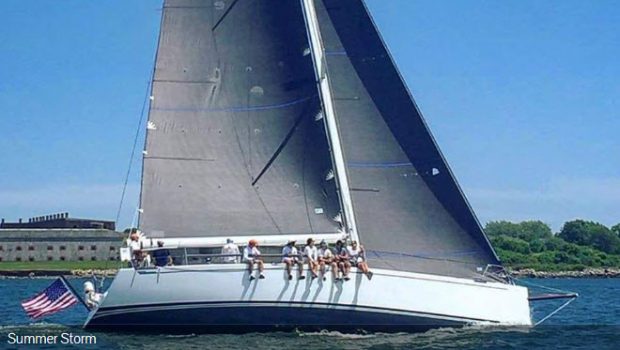



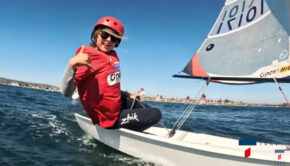
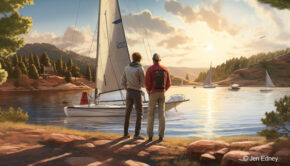
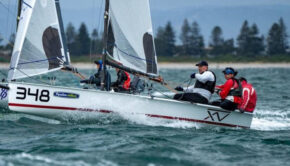
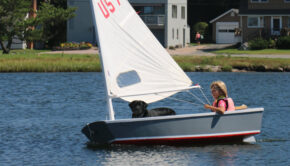
 We’ll keep your information safe.
We’ll keep your information safe.